|
|
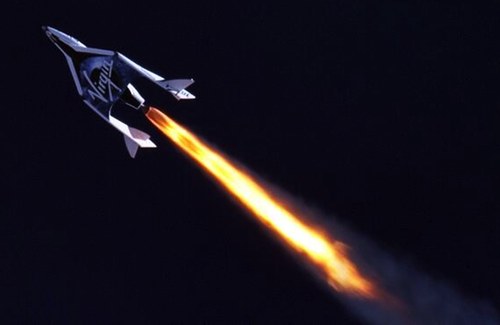 SpaceShipTwo during its first powered test flight on April 29, 2013. (credit: Virgin Galactic/MarsScientific.com) One decade ago, hopes were high for suborbital space tourism. Scaled Composites had performed the first powered test flight of SpaceShipOne in December of 2003, and other than a minor landing mishap, the company seemed to be on track for flying into space in the new year, putting it on the inside track to win the $10-million Ansari X PRIZE before it expired at the end of 2004. That, many believed, would usher in an era of suborbital space tourism by Scaled and other companies, including other X PRIZE competitors, in the following years.
The future, though, turned out a little differently. Scaled did win the X PRIZE with SpaceShipOne, performing suborbital flights in late September and early October of 2004 (as well as a test flight in June.) Scaled also announced a deal with Sir Richard Branson’s Virgin Group, establishing a venture called Virgin Galactic that planned to perform flights using a new vehicle, called SpaceShipTwo, as soon as late 2007.
But six years after that initial start date, SpaceShipTwo is still not yet in commercial service. Building a new, and bigger, vehicle, with a larger version of the hybrid rocket motor that powered SpaceShipOne has turned out to be a far greater challenge than expected in the heady days of 2004. And the other teams who were competing for the X PRIZE in the early 2000s have largely faded away—the da Vinci Project, anyone?
Still, there are signs of optimism for 2014. While development of SpaceShipTwo has been slow, Virgin Galactic did achieve some milestone in 2013, most notably the first powered flight of the vehicle in April. However, more than four months passed before SS2 made a second powered flight, in early September. A third powered flight was reportedly planned for mid-December but scrubbed by poor weather; it’s likely to be rescheduled for early January, after the holiday break ends for Scaled and Virgin.
Virgin did put the year’s developments in a positive perspective in a blog post by Branson on Monday, which included a 90-second video recap of highlights of the past year. It also included undated footage of a full-duration (approximately 55 seconds) burn of a hybrid rocket engine on a test stand; that engine has long been perceived as the limiting factor in SpaceShipTwo’s development.
“We are truly in the final phase of preparations for commercial service,” George Whitesides, CEO of Virgin Galactic, said in the video. When that commercial service will begin isn’t stated, but the company expects that to be some time in 2014; coverage of Virgin’s deal with NBC Universal to broadcast the first commercial SpaceShipTwo flight mentioned a date of August 2014. That, though, is contingent on Virgin making sufficient progress on the test program, which appears to be going slowly so far.
Virgin isn’t the only company in the suborbital spaceflight market. Just down the flightline at Mojave Air and Space Port from Scaled and The Spaceship Company (the Virgin-owned entity that will manufacture SpaceShipTwo and WhiteKnightTwo vehicles), XCOR Aerospace has been working on its Lynx vehicle. Its development has also been slow going, although the company has in recent months been actively blogging work on the Lynx and associated activities, like engine tests. In the company’s most recent release, about a payload integrator agreement with the Czech Space Office, XCOR said flights of the Lynx Mark I prototype will begin in 2014.
XCOR is selling seats on the Lynx through another company, Space Expedition Corporation, or SXC. It’s best known for the contest it held in 2013 with Unilever, whose products include Axe deodorants and related products. That worldwide contest culminated earlier this month with Axe Apollo Space Academy, which awarded 23 trips on Lynx flights earlier this month to contestants after a week of testing and training in Florida.
Blue Origin is also working, slowly, on a suborbital vehicle. In early December, it issued a press release and held a media teleconference—both rare events for the publicity-averse company—to discuss a test of its BE-3 rocket engine, which flew a simulated suborbital flight profile. Company president Rob Meyerson said suborbital flights of its New Shepard vehicle should begin “in the next several years,” without being more specific.
While Blue Origin, Virgin Galactic, and XCOR Aerospace all plan to continue development of their suborbital vehicles for space tourism and research activities in 2014, a fourth company is unlikely to follow. In August, Armadillo Aerospace founder John Carmack said in a speech that his company was out of funds and in “hibernation mode” because of a lack progress after a suborbital test flight in January that suffered a parachute failure. Carmack said the company would remain in hibernation until he found an outside investor or “there’s another liquidity event where I’m comfortable throwing another million dollars a year into things,” as he had previously supported the company with his “crazy money” that he has since exhausted.
Masten Space Systems is not in the suborbital space tourism business—its focus is on flying experiments and technology demonstrations—but it has been quietly working on some vehicles. At the Next-Generation Suborbital Researchers Conference (NSRC) in Colorado in June, Masten chief operating officer Sean Mahoney called 2013 “a critical year” for the company as it decides whether to continue work on low-level technology demonstrators or pursue a suborbital vehicle that can fly to 100 kilometers. If the company has made a decision on its direction for 2014, it’s kept that quiet so far.
The article linked to in the preceding paragraph also shows how the schedule slips for other companies continue: at NSRC less than seven months ago, Virgin Galactic was predicting test flights of SpaceShipTwo to space by the end of the year, while XCOR said Lynx text flights would begin by late in the year. Neither, though, happened. As 2014 begins, companies continue to promise major developments, but the slow progress and delayed schedules of the past suggest that people should continue to be patient.
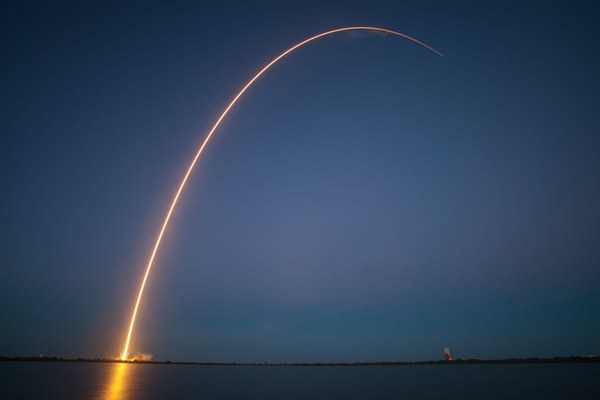 A long exposure time photo of the Falcon 9 v1.1 launch of the SES-8 satellite from Cape Canaveral on December 3, 2013. (credit: SpaceX) [Editor’s Note: this is the first in a series of articles that will both review major events in commercial spaceflight in 2013 and preview what to expect to 2014.]
The year of 2013 will go down as one of the most significant years for the commercial launch industry in recent memory, thanks to the successful introduction of one new and one essentially-new launch vehicle, both by American companies. Those vehicles, which also have launches planned for early January, have the potential to alter the commercial launch industry by offering new, and in some cases lower-priced, options for customers in the US and elsewhere.
The first of these vehicles is Orbital Sciences Corporation’s Antares rocket. After lengthy delays due primarily to issues completing the rocket’s launch facilities at the Mid-Atlantic Regional Spaceport (MARS) in Virginia, the Antares launched on its inaugural flight on April 21, after a few days’ worth of scrubs because of technical and weather issues. That launch placed a mass simulator for the company’s Cygnus cargo spacecraft and several small satellites into low Earth orbit. Orbital followed up that launch nearly five months later with the first “operational” Antares launch on September 18, carrying a Cygnus cargo spacecraft on a test flight to the International Space Station. That mission fulfilled Orbital’s Commercial Orbital Transportation Services (COTS) agreement with NASA, an award that helped fund development of the Antares rocket and Cygnus cargo spacecraft. In both launches the Antares rocket, a two-stage rocket that uses “Americanized” versions of the Russian NK-33 engine in its first stage and a solid-propellant upper stage, performed as planned.
Two and a half weeks after the second Antares launch, SpaceX performed the first launch of its Falcon 9 v1.1 form Vandenberg Air Force Base in California. The company had billed the rocket as a modified version of the Falcon 9 that had performed five previous launches, most recently in March, but SpaceX president Gwynne Shotwell admitted later that “it’s really like the version 1001″, as it uses new Merlin 1D engines and a stretched first stage, among other upgrades. That inaugural launch successfully placed the CASSIOPE satellite for Canada and several smaller satellites into low Earth orbit, but the second stage failed to relight in a test after spacecraft separation. That relight wasn’t needed for the CASSIOPE mission, but would be needed on its next flight to place the SES-8 satellite into geosynchronous transfer orbit.
SpaceX said in November it tracked down the upper stage problem to frozen fuel lines for the igniter fuel for the second stage engine, due to those lines being next to cold liquid oxygen lines. Launch attempts on November 25 and 28 (Thanksgiving Day) were scrubbed because of technical issues, but the Falcon 9 did finally launch on the evening of December 3 from Cape Canaveral. Its second stage relit as needed, placing SES-8 in the proper “supersynchronous” transfer orbit.
Neither Orbital nor SpaceX will be resting on their laurels in 2014, with both companies planning launches in the first week of 2014. SpaceX is planning another Falcon 9 v1.1 launch on January 3, carrying the Thaicom 6 satellite to geosynchronous orbit on a mission very similar to SES-8. (Both SES-8 and Thiacom 6, as it turns out, are satellites built by Orbital.) SpaceX performed a static test fire of that Falcon 9 on the pad at Cape Canaveral on December 28, which, as of this writing, kept the launch on schedule for January 3.
Orbital, meanwhile, is planning another Antares launch no earlier than January 7. This will be the first of eight currently contracted Cygnus cargo missions to the ISS. That launch was planned for mid-December but postponed because of unplanned spacewalks on the ISS to repair a coolant loop on the station. The Cygnus’s payload, besides supplies for the ISS, also includes 28 small satellites for Planet Labs, the commercial remote sensing startup, that will be deployed from the ISS a few weeks after Cygnus berths with the station.
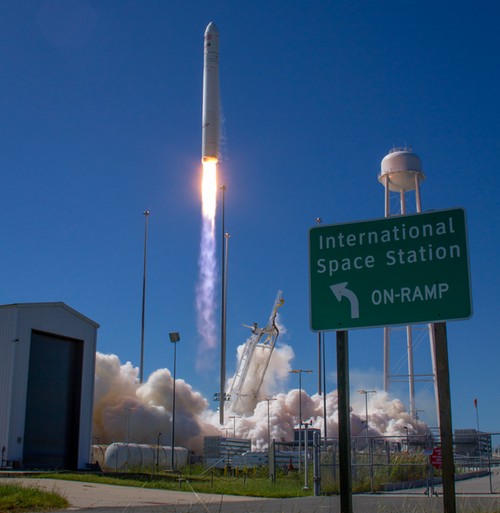 An Antares rocket, carrying a Cygnus cargo spacecraft, lifts off Sept. 18 from the Mid-Atlantic Regional Spaceport in Virginia, en route to the ISS. (credit: NASA/Bill Ingalls) The successful introduction of both rockets, particularly the Falcon 9 v1.1, could have far-reaching effects on the launch industry in the US and worldwide. (Orbital’s Antares has had less of an impact so far, since its only launch contracts are for NASA ISS resupply missions, but the company has made clear its interest in seeking other commercial and government contracts.) SpaceX had already won a number of commercial launch contracts from operators of GEO communications satellites, which still constitute the largest part of the commercial launch market, and the success of SES-8 may help the company win additional contracts from those companies, many of whom are relatively risk-averse and tend to stay away from unproven launch vehicles.
The introduction of the Falcon 9 v1.1 comes at a time when the commercial launch industry is in a state of flux. The market had been dominated in recent years by three companies: Arianespace, International Launch Services (ILS), and, to a lesser extent, Sea Launch. But Sea Launch suffered a failure of its Zenit-3SL rocket in early 2013, destroying the Intelsat 27 satellite and grounding the rocket until April 2014. ILS, which markets the Proton rocket, continues to fight nagging concerns about the reliability of that rocket after a Proton failed in spectacular fashion on a Russian government mission in July. Others are trying to get into the market as well: Japan’s Mitsubishi Heavy Industries won a commercial launch contract from Canada’s Telesat, one of the “Big Four” commercial satellite operators, in September; that will be the first commercial GEO launch for the H-2A rocket. Even Lockheed Martin Commercial Launch Services, which markets the United Launch Alliance (ULA)-built Atlas V, won a rare commercial launch contract, also in September, for Mexico’s Morelos-3 satellite.
Arianespace remains on top of the commercial launch market, with a string of consecutive successful launches of its Ariane 5 stretching back more than a decade, but even its company executives recognize that they have to react to the shifts in the market. In particular, Arianespace, while offering a powerful and reliable launch vehicle, tends to be more expensive than other providers, especially SpaceX’s relatively low-cost Falcon 9. In a speech to the Washington Space Business Roundtable on December 3—just a few hours before the Falcon 9 SES-8 launch—Arianespace CEO Stéphane Israël acknowledged the changes in the market. “We know the competition is not getting any easier,” he said. The company, he said, is addressing this in several ways, including investments in a new, enlarged payload fairing for the Ariane 5 and even changes in pricing, particularly for smaller (2 to 3.4 ton) satellites. In an interview in November with the French newspaper Les Echos, Israël also hinted that Arianespace might lower its launch prices for some classes of satellites: “I have already said that I’m looking at our price policy, and that if we have to adapt because of competition, then we will do so.”
The success of both Antares and Falcon 9 v1.1 also brings them closer to another lucrative launch market: the US government. While both Orbital and SpaceX have NASA contracts to launch cargo missions to the ISS, Orbital has not won satellite launch contracts from NASA and the Defense Department, while SpaceX has only a couple: the Jason-3 satellite for NASA and two demonstration launches for the US Air Force, one using the as-yet-unflown Falcon Heavy. However, both are one launch away from flying three consecutive successful launches, which would be major milestones for certifying them for future military and civil government launches. (The Air Force has yet to confirm that the first Falcon 9 v1.1 launch in September counts as a success, Space News reported last week, because of the upper-stage relight issue.) If certified, SpaceX and Orbital could compete, starting most likely in 2015, for launches of national security payloads that today are effectively sole-sourced to ULA’s Atlas V and Delta IV.
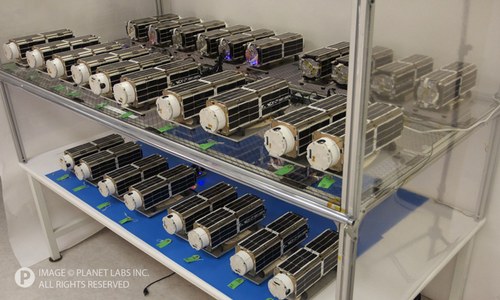 The 28 satellites of Flock 1, the first constellation of remote sensing satellites built by Planet Labs. The satellites will be launched on a Cygnus cargo spacecraft to the International Space Station in January. (credit: Planet Labs) Less than six months after coming out of stealth mode, San Francisco-based remote sensing company Planet Labs announced a second major funding round on Wednesday. The company said it raised $52 million in a Series B round, adding some new investors in the process. This funding comes on top of the $13.1 million is raised in a previous Series A round the company formally announced when it unveiled itself in June.
Among the new investors is Yuri Milner, a Russian billionaire who may not have much name recognition outside of business circles, although the companies he’s invested in are certainly well-known. He invested in Facebook several years ago, before the company went public, and also has stakes in companies like Twitter and Zynga. “Planet Labs is revolutionizing the spacecraft sector,” Milner said in the press release announcing the financing round. “Its passionate and high performance team is utilizing elegant science and sophisticated technology in pushing the boundaries of what was thought to be possible in satellite manufacturing and deployment.”
Other new investors into Planet Labs in the Series B round include Industry Ventures, Felicis Ventures, Lux Capital, and Ray Rothrock, while the company’s original investors, including Draper Fisher Jurvetson, also participated in the round.
The company did not disclose in its release what it plans to use the funding for (and, unlike some previous company news, Planet Labs appears to focus its advance briefings on the news on technology and financial, and not space, media.) The company did tell one technology publication, TechCrunch, that it planned to hire engineers to help deal with the “torrent of new data” that will be coming in after the launch of its first constellation of satellites.
The announcement of the Series B round was timed to be on the eve of the launch of that first constellation of smallsats, dubbed Flock-1. As it turns out, though, the company, and its new investors, will have to wait a little while longer. The satellites are included in the payload of the first Cygnus cargo mission to the International Space Station, which was scheduled for launch Thursday night on an Antares rocket from Virginia. However, NASA has delayed that launch until mid-January to allow the ISS crew to first carry out repairs to a coolant loop on the station.
For the last couple of months, Virgin Galactic had promised that its next powered flight of SpaceShipTwo would take place soon. But, after all that time, Wednesday was still too soon, at least as far as Mother Nature was concerned. Virgin planned to carry out a powered test flight of SpaceShipTwo on Wednesday from Mojave, but cloudy conditions kept the spacecraft and its WhiteKnightTwo carrier aircraft on the ground:
As the tweet above states, Virgin didn’t specify when the flight would be rescheduled. Doug Messier reports that the flight will likely not take place until after the first of the year: poor weather is forecast for Thursday, and holiday vacations start on Friday. (However, the current weather conditions in Mojave aren’t that bad—only partly cloudy conditions—so stay tuned.)
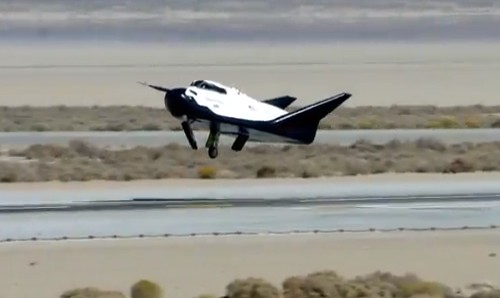 SNC’s Dream Chaser engineering test article (ETA) moments before landing at Edwards Air Force Base on October 26. The image is a still from a video released by the company on October 29; the video cuts off before the actual landing but the missing left main gear is evident in the video. (credit: SNC) On Monday, Sierra Nevada Corporation (SNC) announced some good news about the development of its Dream Chaser crewed spacecraft: NASA had certified the company had achieved the final milestone of its Commercial Crew Development phase 2 (CCDev-2) award with its October 26 glide flight at Edwards Air Force Base in California. The vehicle’s “performance during flight exceeded predictions and requirements,” the company said in its press release, and NASA had awarded the company the full value of that milestone, $8 million, according to its amended Space Act Agreement with NASA for CCDev-2.
“SNC is pleased to begin flight testing and to have successfully completed the CCDev2 agreement with passage of this most recent milestone,” SNC executive vice president Mark Sirangelo said in a statement. “Having the Dream Chaser flight exceed our expectations on its first autonomous flight was an extraordinary accomplishment for SNC, its team of industry, government and university partners, and all those who worked on the NASA heritage HL-20 vehicle that Dream Chaser is based on.”
The completion of the milestone closes out SNC’s CCDev-2 agreement and allows the company to focus on its Commercial Crew Integrated Capability (CCiCap) award it received from NASA in August 2012. SNC will also likely submit a proposal for the next round of the program, Commercial Crew Transportation Capability (CCtCap); proposals are due to NASA in late January with awards expected in summer 2014.
While the press release emphasized the good news about the milestone, there was something missing in the press release: any additional details about the Dream Chaser’s landing mishap. As the vehicle came in to land at Edwards, the left landing gear failed to deploy, causing the vehicle to skid off the runway. In a call with reporters a few days after the test, SNC’s Sirangelo downplayed the damage to the vehicle, saying it was “repairable and flyable” and that the flight overall was a “significant success.”
The press release issued by SNC Monday makes no mention of the landing gear problem or the status of the Dream Chaser engineering test article. A separate statement by NASA only alludes to “an anomaly during landing and rollout” without going into more detail. The release also offered no new photos or video of the October 26 test or aftermath.
Update 12/18 7 am: SNC did respond late yesterday to a few questions about the status of the Dream Chaser vehicle and the investigation into the landing gear failure. “The landing gear issue was deemed to be unrelated to the design of the vehicle and a one-off isolated incident,” a spokesperson said, adding that the test article used “heritage F-5 landing gear” that won’t be used on orbital vehicles. The company is working to return the test article to flight status, with additional drop tests planned to take place at Edwards some time in 2014 (the company did not offer a more specific schedule.)
As for additional footage of the flight? “At this time SNC is not going to release any additional photos or video regarding the free-flight test,” the spokesperson said.
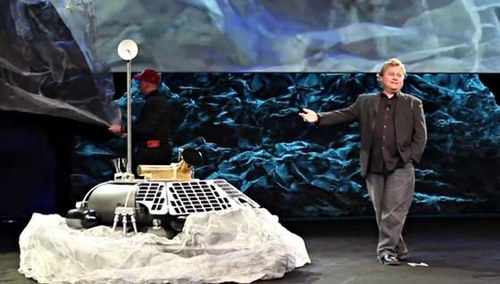 Moon Express CEO Bob Richards shows off his company’s MX-1 lander during an event in Las Vegas on December 5. (credit: Moon Express) On Saturday morning (US time), China’s Chang’e-3 spacecraft successfully landed on the surface of the Moon, making it the first spacecraft to soft-land on the Moon since Luna 24 in August 1976. (Other spacecraft had crash-landed on the Moon since then, primarily orbiters at the end of their mission.) By Sunday the spacecraft will deploy its Yutu, or “Jade Rabbit,” rover, which will explore the Bay of Rainbows landing site for three months or more.
As I reported earlier this month in The Space Review, the landing is a setback for the Google Lunar X PRIZE (GLXP), which offers $30 million in prizes for the first privately developed spacecraft to land on the Moon, traverse at least 500 meters, and take a set of photos and videos from those locations. When the prize started in September 2007, there was a widely-held belief among many supporters of commercial spaceflight that the next spacecraft to land on the Moon would belong to the winning team. For a time, the prize also included a “government landing penalty,” where the $20-million grand prize would be decreased to $15 million should a government land on the Moon before a GLXP team.
As GLXP teams have struggled to develop their spacecraft, the X PRIZE Foundation restructured the prize to remove that penalty, and unveiled in its place a set of “Milestone Prizes” that will provide near-term awards to teams that demonstrate the development of key subsystems in the next year.
Many of the teams have not made significant progress and appear unlikely to have a vehicle ready to fly before the prize deadline of the end of 2015. A few, though, appear to still be in the game. In The Space Review article, I profiled a couple such teams: Moon Express and Penn State Lunar Lion, who are taking different technical and organizational approaches to winning the prize. A couple of others, Astrobotic Technology and Barcelona Moon Team, have launch contracts in place for their missions, a key “long lead” item needed to be ready to fly by the end of 2015.
And, since that article, Moon Express made a major announcement. On December 5, the company unveiled its MX-1 lunar lander design, which appears to be the “micro lunar lander” the company talked about this summer. The MX-1 is a small spacecraft (“about the size of a large coffee table,” the company says in its announcement) that uses hydrogen peroxide thrusters to land on the lunar surface. Those thrusters also make use of kerosene “as an after burner” to provide additional thrust to escape from Earth orbit. The spacecraft doesn’t appear to make use of landing legs, instead sitting on the surface on a circular base; the announcement is vague about this and other technical details about the spacecraft.
“This is an incredibly, incredibly powerful piece of technology,” Moon Express CEO Bob Richards said when unveiling a full-size model of the spacecraft during the closing ceremonies of the Autodesk University conference in Las Vegas. The unveiling had a Star Trek theme, with the soundtrack of the original TV series playing as three people wearing Enterprise uniforms removed the top of a faux rock, underneath which was the lander model.
In its press release, Moon Express noted the MX-1 design has applications beyond landing on the Moon, including satellite servicing and space tug uses in Earth orbit. “The MX-1 is not just a lunar lander, it is a spacecraft workhorse with many markets†Richards said in the release. “The MX-1 is the ‘iPhone of space’; a platform capable of supporting many apps including our core plan of exploring the Moon for resources of benefit to humanity.â€
Moon Express and the other GLXP teams now have just over 24 months to do what now three countries—the former Soviet Union, the US, and China—have done: land a spacecraft on the surface of the Moon.
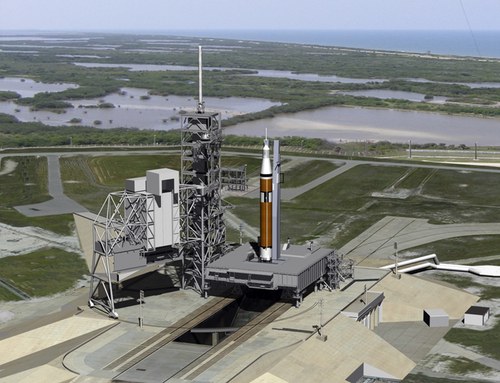 A NASA illustration of a notional commercial rocket on the pad at Launch Complex 39A at the Kennedy Space Center. NASA selected SpaceX to begin discussions on a lease to allow the company to launch Falcon rockets from the pad. (credit: NASA/KSC) When NASA announced plans earlier this year to lease Kennedy Space Center’s Launch Complex 39A (LC-39A), a pad used for Space Shuttle launches but no longer needed by NASA, it probably didn’t anticipate the legal battle that resulted. Only two companies, Blue Origin and SpaceX, submitted proposals to lease the pad, but a dispute over whether the pad should be a multi-vehicle facility or exclusively used by one company delayed a decision on who should get access to the pad.
The logjam broke Thursday afternoon when the Government Accountability Office (GAO) released its decision on a bid protest filed in September by Blue Origin. The company claimed that NASA would not equally treat proposals submitted that would make LC-39A a multi-vehicle facility, versus one exclusively used by one company. (Blue Origin had submitted such a proposal, while SpaceX had originally submitted plans to make exclusive use of the pad.) Included in Blue Origin’s complaint was a comment by NASA administrator Charles Bolden earlier in the year, who said neighboring LC-39B was the preferred site of a multi-user launch pad (including for NASA’s own Space Launch System).
The GAO, in its decision, concluded that it did have jurisdiction to consider the dispute, something NASA had not agreed was the case. However, the GAO found no evidence that NASA favored one type of lease proposal over the other. “In the final analysis, we agree with the agency that the AFP contemplates two possible approaches, but includes no preference for one approach versus another,” the GAO concluded, denying Blue Origin’s protest.
When the GAO released its decision, NASA didn’t indicate when it would make a decision about the lease of LC-39A. It did not, though, end up wasting any time: on Friday afternoon, NASA announced it was entering into negotiations with SpaceX for leasing the pad. “NASA made the selection decision Thursday after the U.S. Government Accountability Office (GAO) denied a protest filed against the Agency by Blue Origin LLC on Sept. 13,” NASA stated in the release. The agency explained that it continued to evaluate the proposals while awaiting the GAO decision, and thus was ready to move as soon as the protest was formally denied.
And, as it turns out, the debate over whether LC-39A should be an exclusive-use or multi-use pad turns out to be a moot one. When the controversy over the pad erupted in September, with dueling letters from members of Congress supporting both Blue Origin’s and SpaceX’s bids, SpaceX announced it was open to allowing other companies to use the pad if they wanted. “At the time we submitted the bid, SpaceX was unaware any other parties had interest in using the pad,” the company said then. “However, if awarded this limited duration lease on 39A, SpaceX would be more than happy to support other commercial space pioneers at the pad, and allow NASA to make use of the pad if need be.” Blue Origin has indicated recently they would not be ready to begin test flights of their orbital vehicle until 2018, so SpaceX might not have much company at LC-39A for a while.
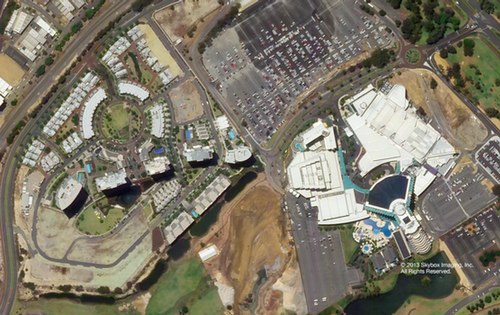 An image of the Crown Perth entertainment complex in Perth, Australia, taken by the SkySat-1 spacecraft earlier this month. (credit: Skybox Imaging) One of the more than 30 satellites launched on a Dnepr rocket from Russia last week was SkySat-1, the first satellite for Skybox Imaging, the Silicon Valley startup that plans a constellation of satellites to provide relatively high-resolution images for commercial users. “To our knowledge, SkySat-1 is the smallest satellite ever flown that is capable of capturing imagery at better than 1 meter resolution,” the company stated in a blog post earlier this week. (On the same launch, incidentally, were two smaller satellites for another Earth imagery startup, Planet Labs.)
The blog post was linked to the release of the first imagery from the satellite. The company initially released images taken of Perth, Australia, on December 4; since then, they’ve added a couple more images to their online gallery, of a university in Abu Dhabi and of the coastline of Somalia. “As you can see below, features are clearly discernible that validate our goal to provide high-quality, sub-meter imagery: car windshields, varying car colors, road markings, etc,” the company stated. “These images exceed our early expectations for quality.”
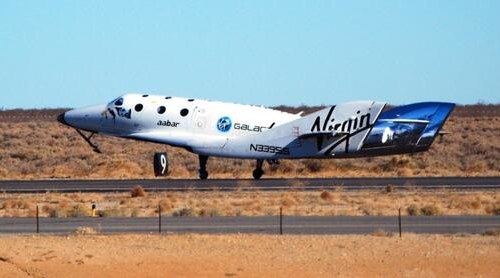 SpaceShipTwo landing after a December 11, 2013 glide flight. The inboard surfaces of the vehicle’s vertical stabilizer are covered with Kapton to help regulate their temperature. (credit: Virgin Galactic) Virgin Galactic announced yesterday that SpaceShipTwo (SS2) performed an unpowered test flight yesterday while stating again that it would soon perform another powered test flight. The flight, the first for SS2 since its second powered flight on September 5 (according to Scaled Composites’s flight log), appeared to be a routine glide test that featured a test of SS2’s nitrous dump system. SS2 also sported a new look, with reflective Kapton material on the inboard surfaces of the vehicle’s vertical stabilizers, which Virgin said is intended to help the vehicle better manage temperatures (presumably from the exhaust of the vehicle’s hybrid rocket motor.) Parabolic Arc first reported the addition of the material on Tuesday.
Virgin documented the flight in some tweets, a sampling of which are below:
Note in one of the tweets that Virgin says the next powered flight is “coming up soon.” Exactly what constitutes “soon” is unclear: In mid-October, Virgin president Steve Isakowitz said a powered flight was coming up “very soon.” In early November, company CEO George Whitesides said the next powered test was “about a month away… maybe a little less.”
[ Note: post corrected to property identify the vehicle surfaces covered in Kapton. ]
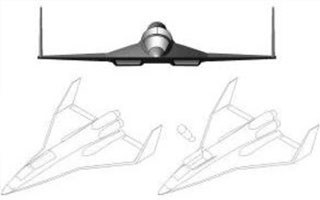 An illustration of an unidentified Rocket Crafters spaceplane design hosted on the company’s website. (credit: Rocket Crafters, Inc.) One of the lesser known, and more quixotic, companies in the NewSpace field in recent years has been Rocket Crafters. The Utah-based company entered the field a few years ago with plans to develop hybrid rocket motors and vehicles that would use them, including suborbital spaceplanes. The company, though, disclosed few details about its development efforts and plans beyond its rather basic website.
That did not stop the company from signing agreements with spaceports and local governments eager to attract a part of the commercial spaceflight industry. In July 2012, Rocket Crafters and local officials announced a deal to establish the company’s corporate headquarters in Titusville, Florida, on the state’s “Space Coast” near Cape Canaveral. The company promised to create up to 1,300 fulltime jobs there and invest $72 million into facilities at the Space Coast Regional Airport, just across the Indian River from the Kennedy Space Center (KSC). Local officials proposed getting an FAA spaceport license for the airport to allow Rocket Crafters to perform suborbital flights there. In return, the company received “a State of Florida Qualified Target Industry Tax Refund (QTI) and workforce incentives,” according to the Space Florida announcement, and even a welcome from KSC officials, who were not involved in the deal but wanted to talk with Rocket Crafters about “how Kennedy’s unique assets and technical capabilities may be made available to enable their success.”
There has been, though, little public activity from Rocket Crafters since that July 2012 announcement, beyond an October 2012 announcement of a memorandum of understanding between the company and Spaceport Colorado, a proposed spaceport at the existing Front Range Airport east of Denver. That stated the company was interested in flying out of the spaceport, including test flights between the spaceport and what the company called the Neil Armstrong “International Air & Space Center” in Titusville. Rocket Crafters also proposed creating up to 80 fulltime jobs at the Colorado site, in addition to its activities in Florida.
In those earlier statements, Rocket Crafters officials said those job figures were its long-term goals, that would take several years to realize. But as the Miami Herald and Tampa Bay Times reported Friday, the company’s plans have been slow to take off, and may not do so at all. Rocket Crafters vice president Eric Witcher said the company currently has only two employees in Florida, and “has abandoned plans to create a rocket that can transport cargo and humans into space.” It wasn’t clear from the article what the company would do instead of developing suborbital or orbital vehicles; one possibility would be to focus on its rocket motor technology for other applications.
“We may or may not be in over our heads,” Witcher told the papers. With very little to show for what progress it has made to date, many observers may not share that sense of uncertainty.
|
|











Recent Comments